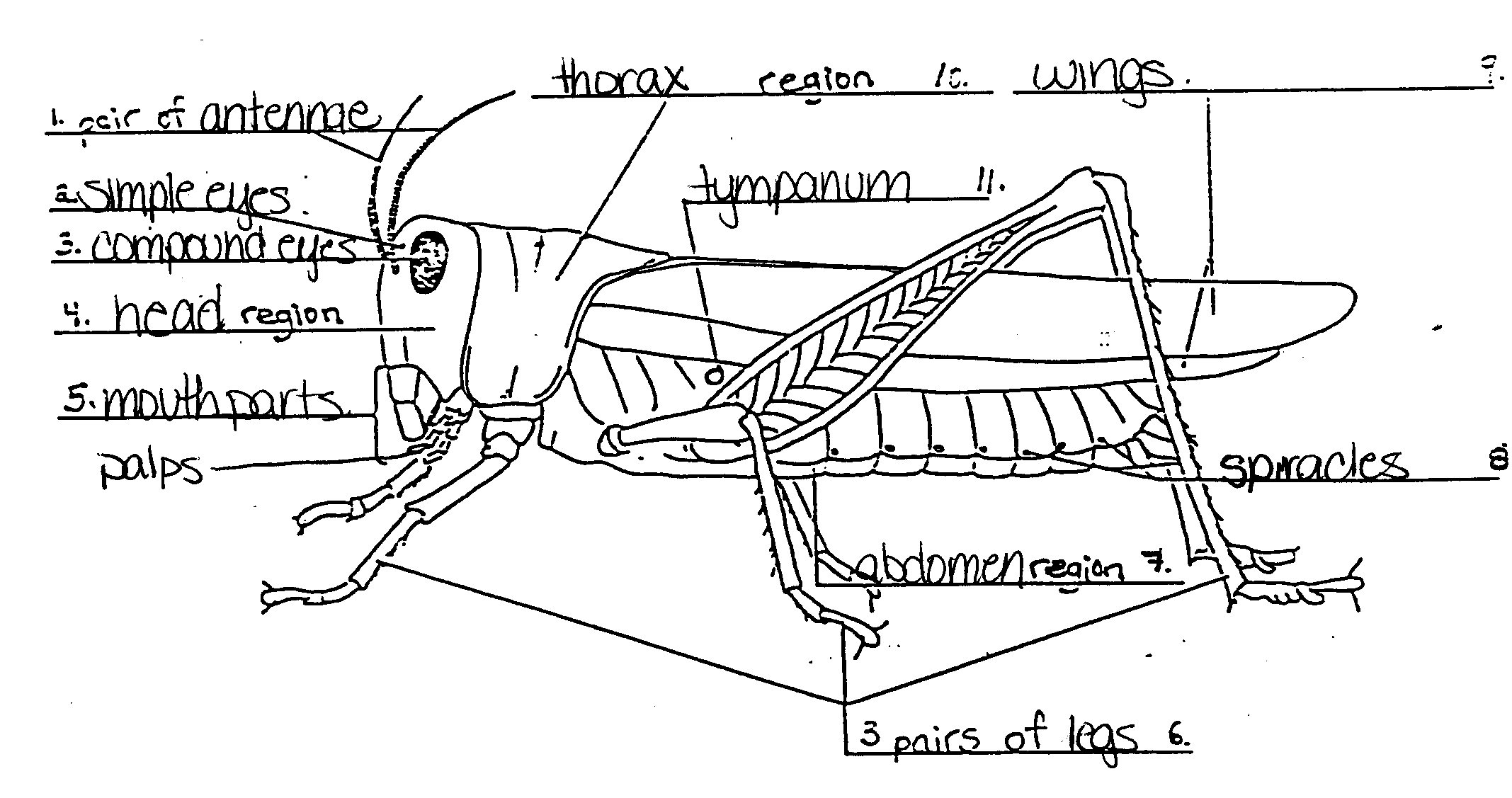Grasshopper
(
)
Physical Description
The grasshopper's body is divided into three sections: the head region,
the thorax region, and the abdomen region. The head has a pair of antennae,
simple eyes, compound eyes, mouth parts containing two palps. The thorax
region has one pair of legs used for walking. The abdomen region
consists of the wings, tympanum, spiracles, and two pairs of legs. The
large back legs are used for jumping while the small front legs are used
for walking. If the grasshopper is a male it will have a round, blunt end
designed for transfer of sperm, while a female will have four prongs on
her end, called an ovipositor, used for egg-laying. The grasshopper has
a hard outer shell (called an exoskeleton) made of chitin. The chitin helps
to conserve moisture in the grasshopper and the exoskeleton helps protect
against injury.

Roles of Features
Antennae- detect odour and touch
Simple eyes- sense changes in light brightness
Compound eyes- sense movement and crude images
Mouth parts- designed for chewing
Palps- used for tasting
Wings- thin but rigid and veined
Tympanum- a round membrane designed for the grasshopper to detect sound
waves
Spiracles- tiny holes that allows air to enter the trachea
Senses
The five senses are sight, hearing, taste, touch, and scent. The grasshopper
uses its two pair of eyes (the simple and compound) to see, the tympanum
to hear sounds, palps to taste, the antennae for feeling and smelling.
Locomotion
The grasshopper has many forms of locomotion. They include walking, running,
crawling, jumping, and flying.
Survival
The grasshopper has a hard outer shell called an exoskeleton made of chitin,
to protect it. It also preserves moisture.
[HOME]
PERCH] [PARAMECIUM]
[EARTHWORM]